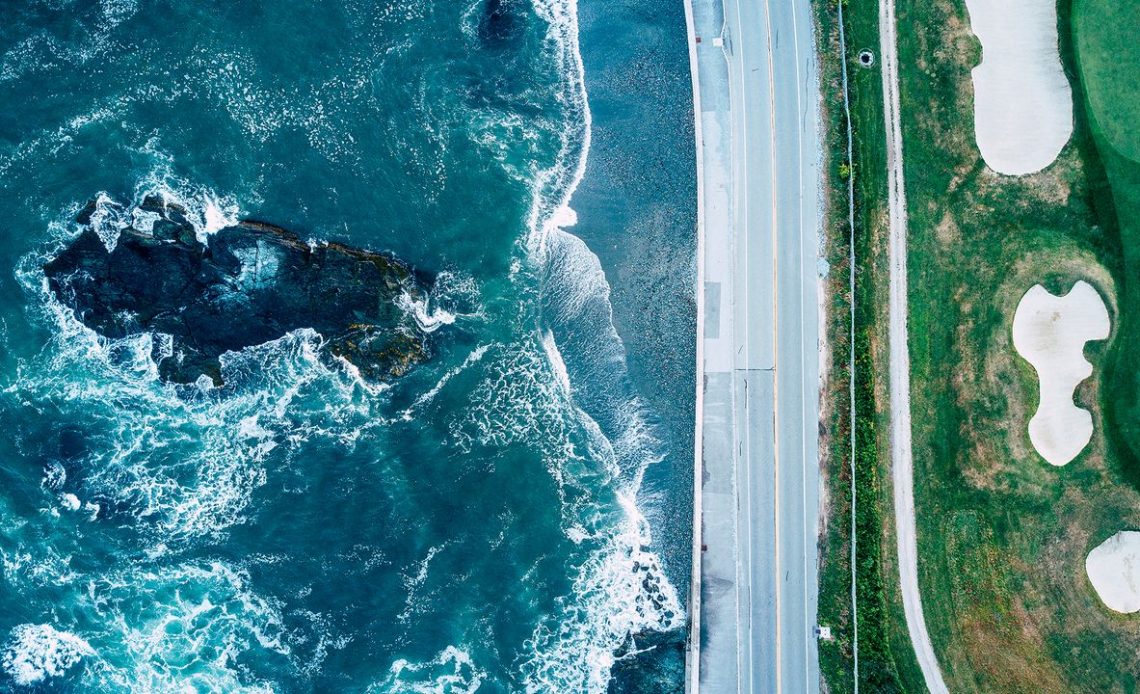
Mike Zalewski wasn’t always sold on drones. “I was the stubborn old man when it came to the popularity of drones,” he admits. But once he finally gave it a try, he was hooked. The unique, high-up perspective drones offer opened up a whole new world for his photography.
Mike captured Rhode Island’s Favourite Drive in August 2017, using settings of f/2.2, ISO 100, and a 1/20 seconds exposure. Mike has been behind his camera for over 15 years, starting out inspired by BMX bike magazines back in high school. His works span everything from landscapes to weddings and family portraits.
Let’s dive into the story behind this image and explore how Mike’s drone gave him a fresh way to capture the world.
Image Analysis
Elevated perspective
Camera drones have become powerful tools that have unlocked a world of dynamic and captivating perspectives that were once out of reach. “A lot of people knew me for my landscape and sunset images, so adding a drone to the mix really allowed me to change my perspective and highlight Newport in a beautiful way.”
Area characteristics
“I began by flying close to the rock and focusing on capturing the crashing waves. The rock almost appeared like some sort of large animal swimming in the water,” Mike says. But as the narrow frame of a drone shot can quickly become abstract, Mike elevated the drone to capture additional elements.
“I decided to include the road as well, as it is a popular route among the locals and tourists around Newport, Rhode Island,” he says. By capturing the wider area, the viewer gains a sense of the place within the vast beauty of the surrounding landscape.
Dividing lines
Capturing powerful aerial photographs requires a keen eye for composition so that it stands out. “When I compose the shot, I pay attention to how my view gets drawn into the scene. This helps with creating a balanced composition but one with a direction,” says Mike.
“The cool blue waves lead me to the road, which leads to the green grass. On seeing this view, the separation of the ocean, road, and grass caught my eye as a unique composition. I shifted my frame so that the road wasn’t placed directly in the centre,” he explains.
Sense of scale
Capturing a scene from a high vantage point reduces even the largest subjects in size so that they appear small. Here, Mike has attempted to include elements that give a sense of scale, allowing the viewer to better understand the size of the area depicted in the frame.
This way, the viewer is confronted with a comparison that highlights the impressive natural elements even more. For this reason, Mike chose to include the road in his composition; however, by showing this element without any cars, the road appears to blend in seamlessly with the landscape.
Gear Info

Mike captured this stunning aerial image using the DJI Mavic Pro, a compact yet powerful drone that packs advanced features once found in larger platforms. Thanks to its sophisticated flight control system – leveraging GPS, vision sensors, and ultrasonic range finders – the Mavic Pro navigates with precision and avoids obstacles effortlessly.
The Mavic Pro’s 12MP camera, stabilized by a 3-axis gimbal, delivers smooth 4K video and sharp photos. Although the Mavic Pro is no longer in production (discontinued in April 2025), it remains a beloved choice for drone enthusiasts seeking a portable yet capable device. A comparable model would be the DJI Mini 4 Pro or the DJI Air 3S.

Author: Kim Bunermann
Source: DigitalCameraWorld
Reviewed By: Editorial Team



